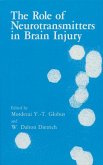This book provides a comprehensive overview of cellular communication, highlighting its significance in maintaining physiological processes. It begins with an introduction to cellular communication and its molecular components, such as ligands, receptors, intracellular signaling proteins, and feedback mechanisms. Various cell signaling methods are categorized based on distance, signal nature, and transmission pathways. Key signal transduction pathways, including GPCR, RTK, JAK/STAT, and PI3K-Akt, are explored alongside their roles in signal reception, transduction, cellular response, and termination. Subsequent chapters delve into specific receptor types, such as GPCRs, tyrosine kinase receptors, and nuclear receptors, as well as second messengers in intracellular signaling cascades. Finally, the book examines the application of cellular communication in physiological systems like the nervous, endocrine, and immune systems, emphasizing its role in maintaining homeostasis and responding to environmental stimuli.
Bitte wählen Sie Ihr Anliegen aus.
Rechnungen
Retourenschein anfordern
Bestellstatus
Storno









